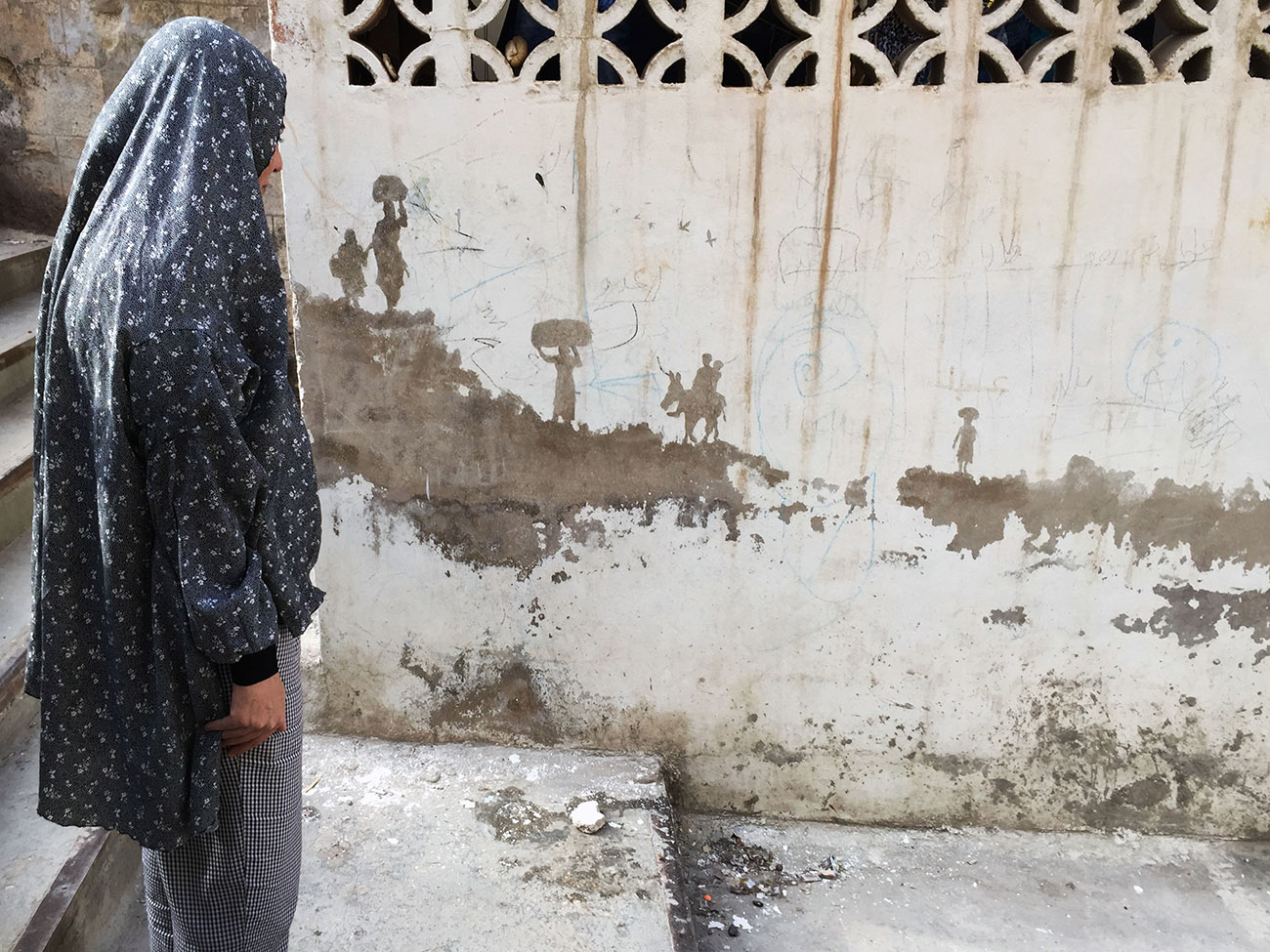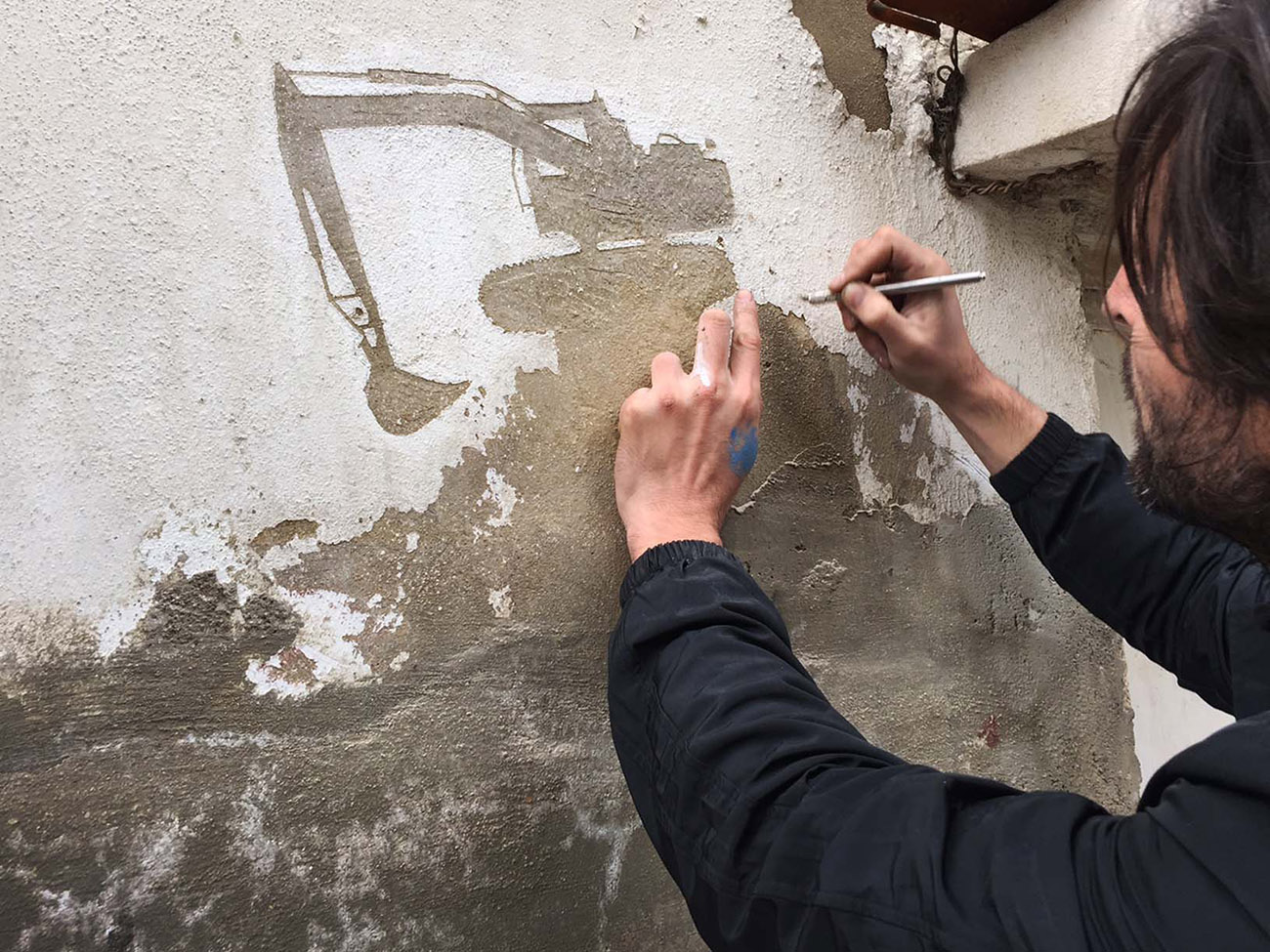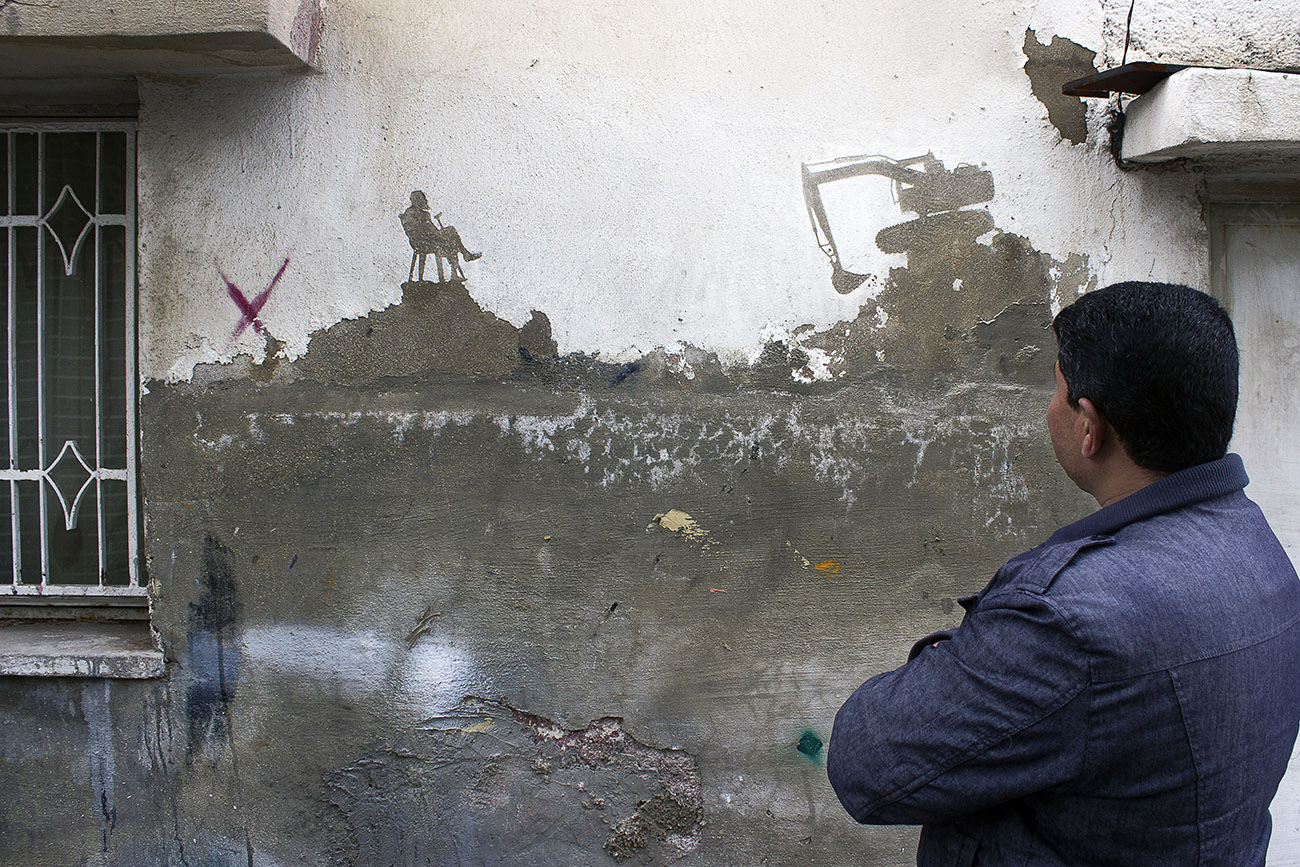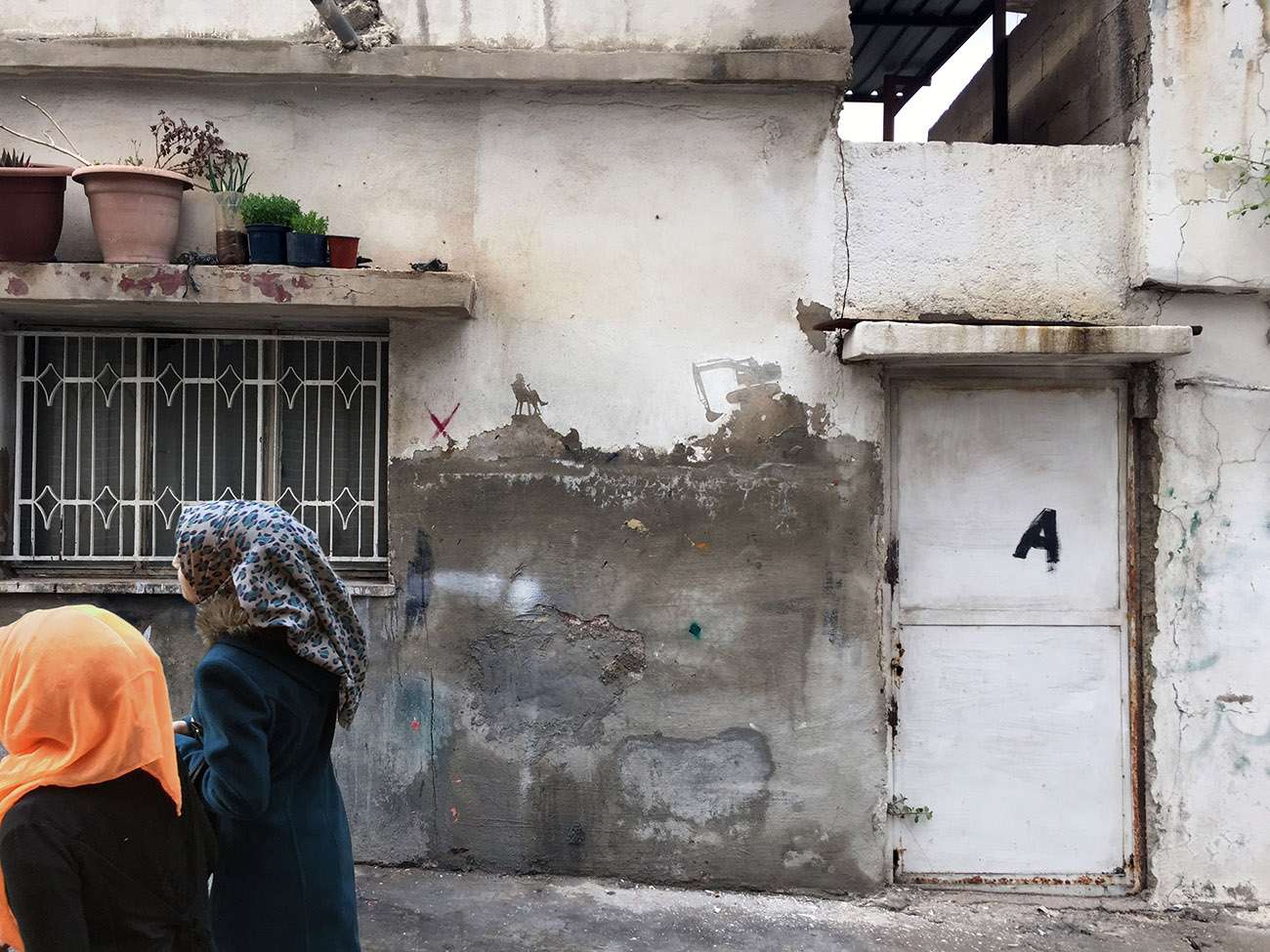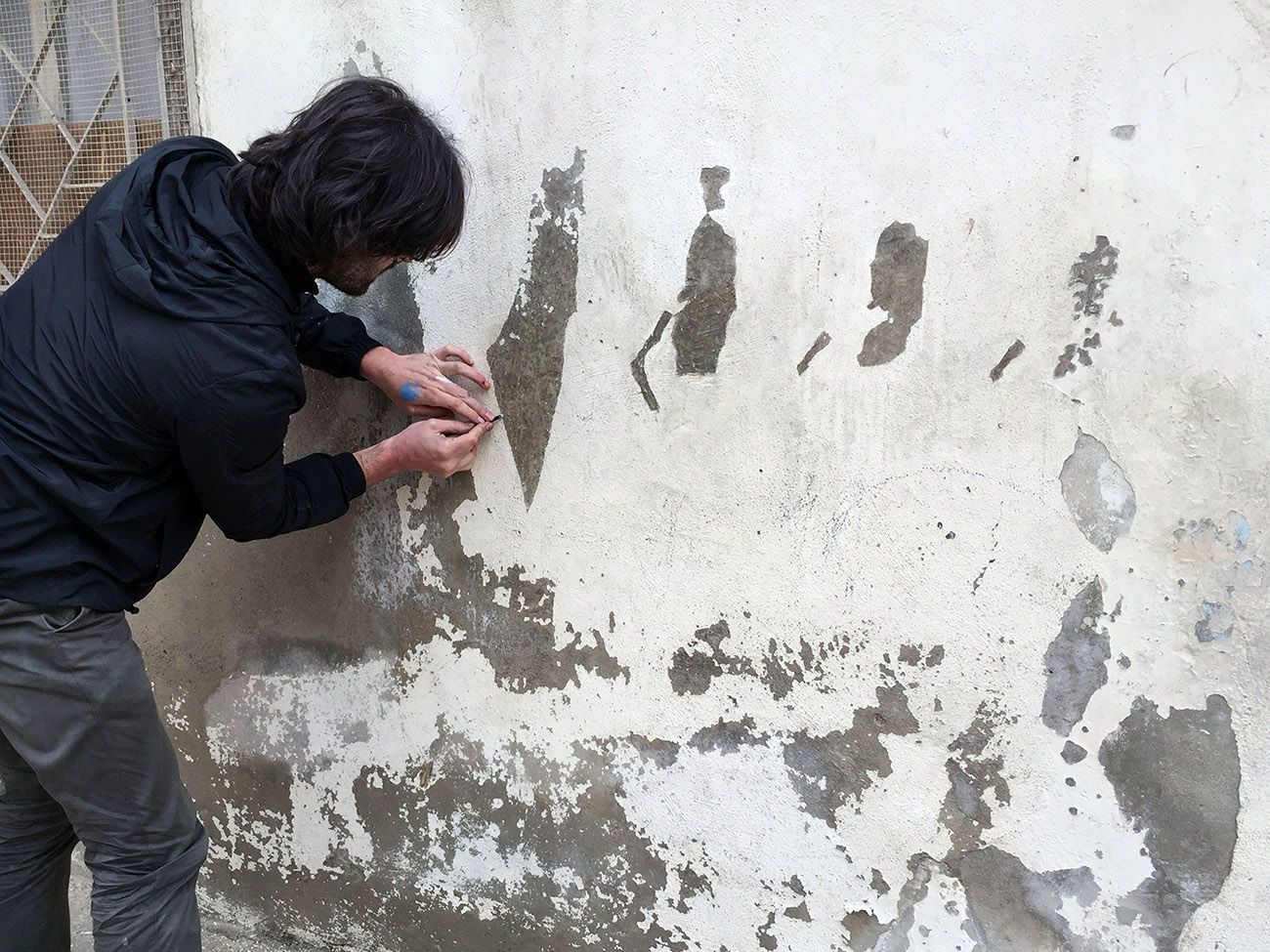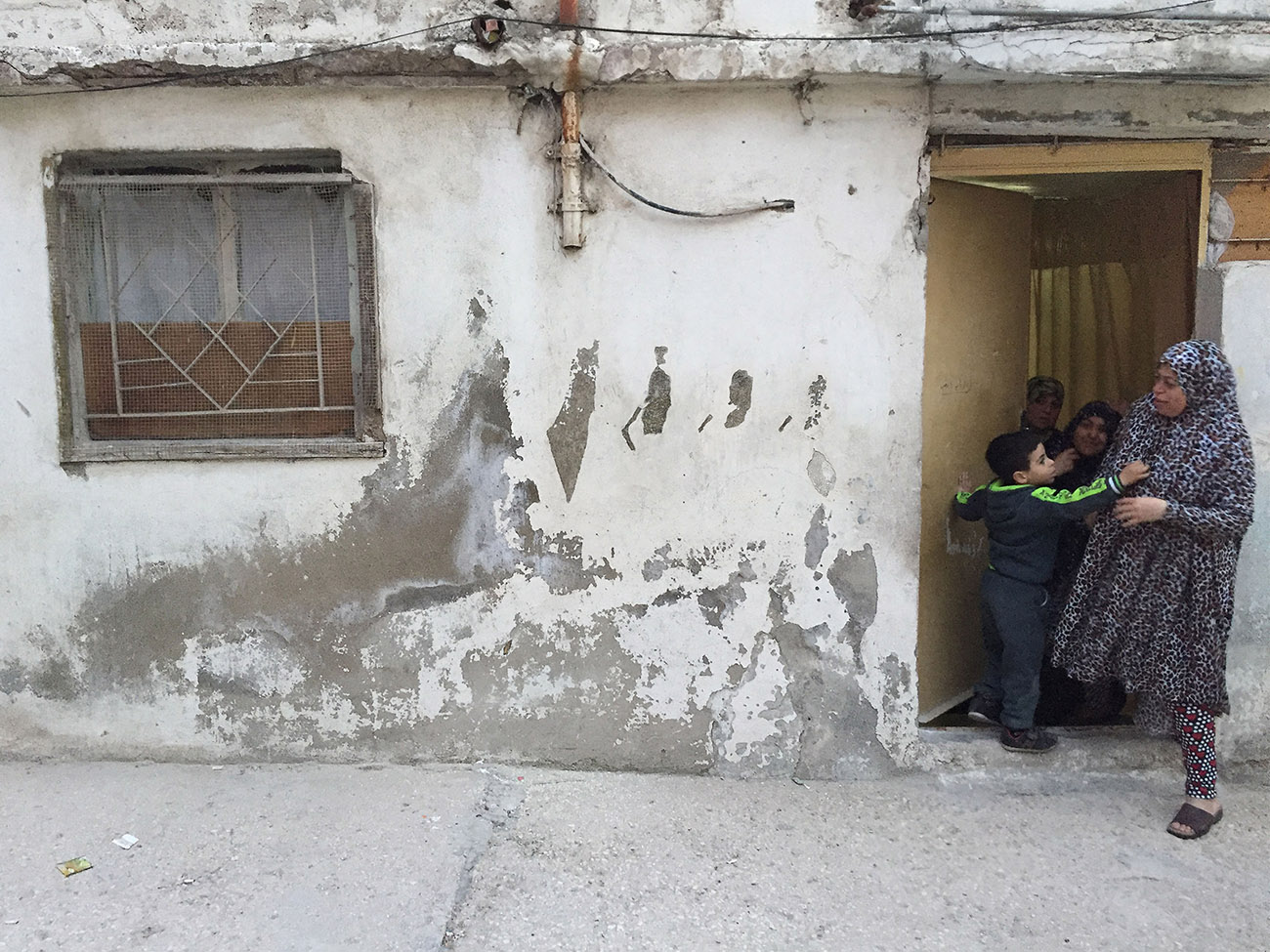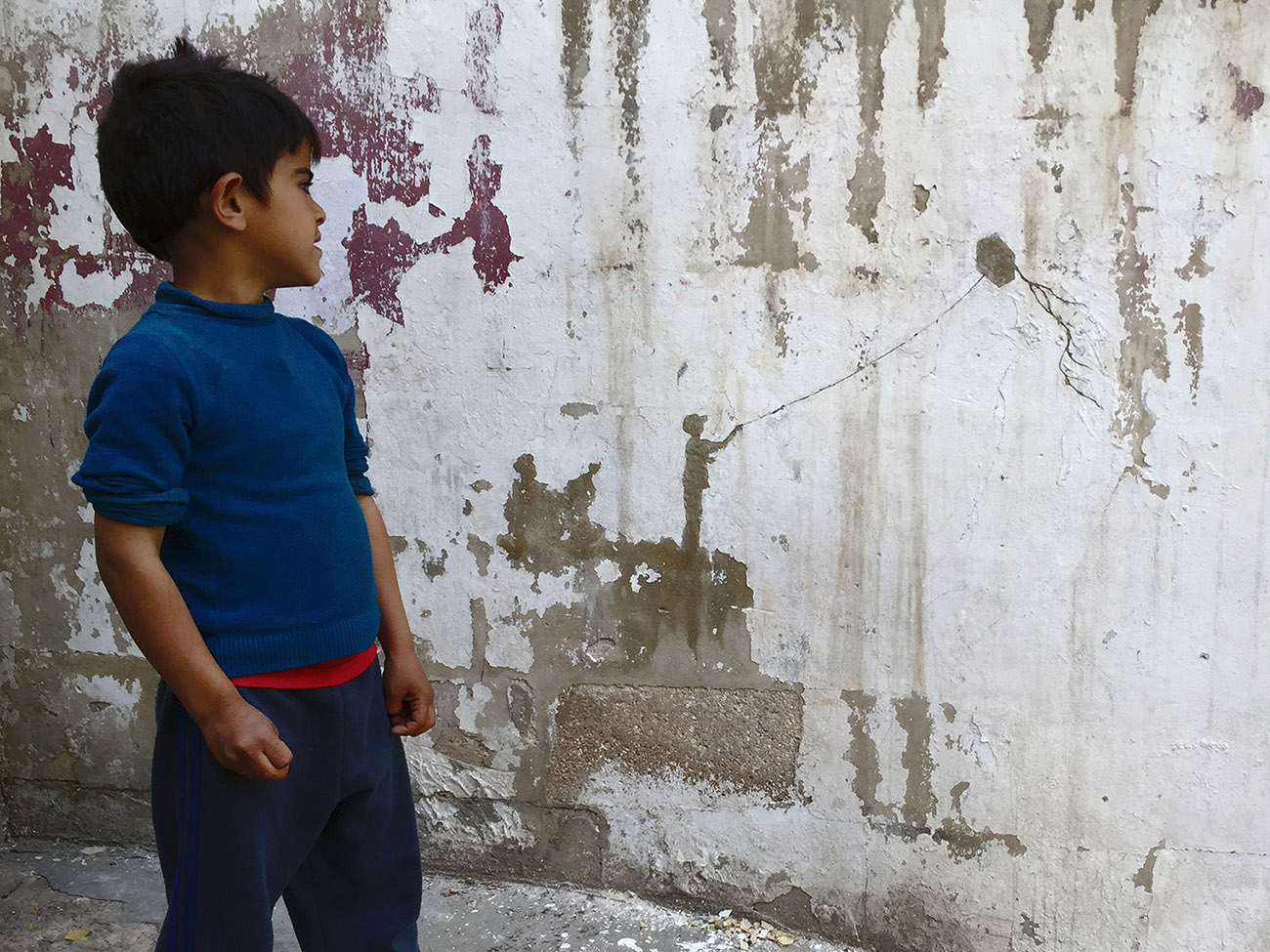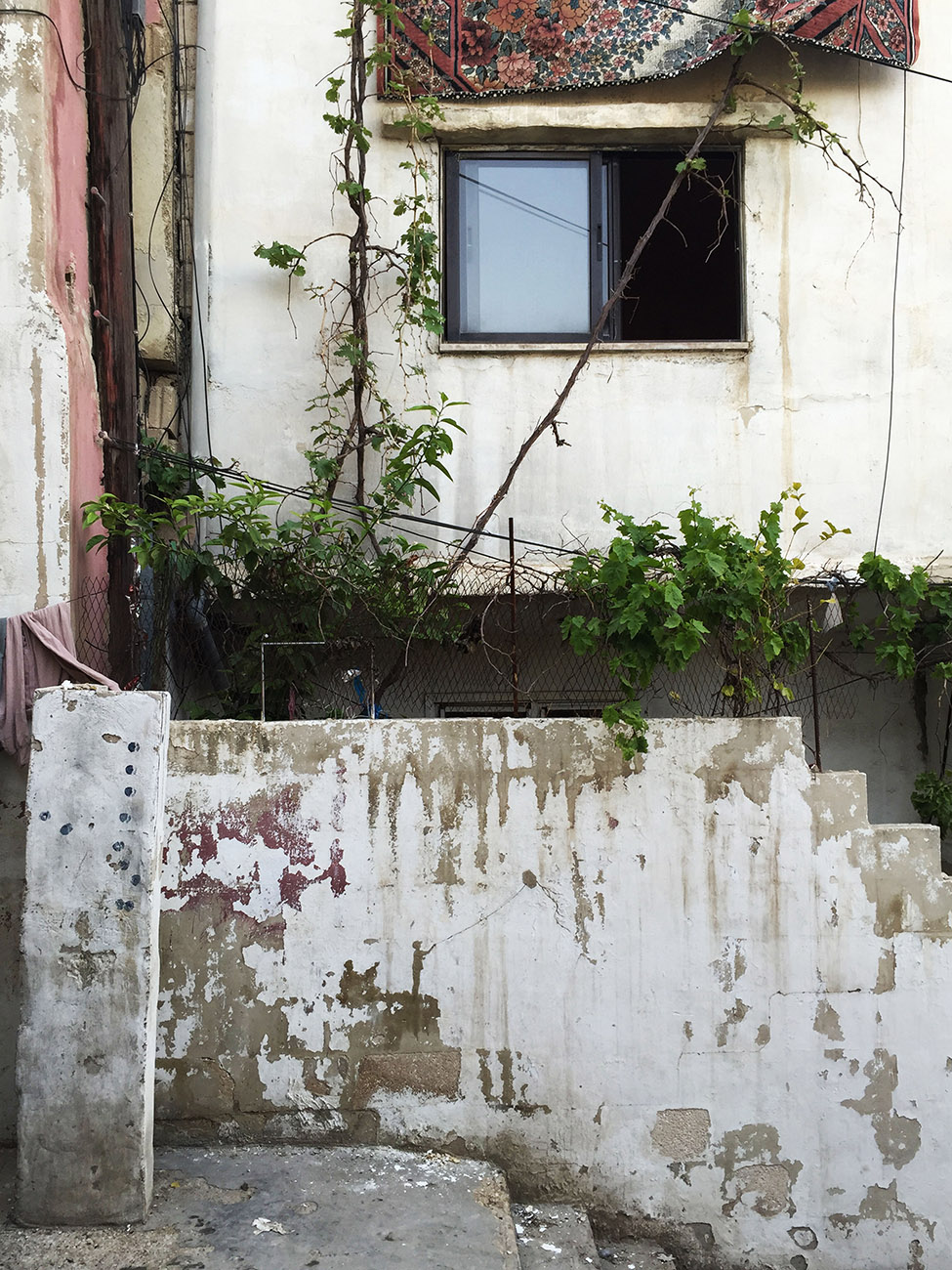After spending months locked in his Barcelona studio working on an upcoming London solo show, Pejac recently flew to Middle East to create more thought provoking work. Always ready to tackle sensitive subjects in a subtle yet powerful way, his first stop was Al-Hussein, a Palestinian refugee camp in Amman, Jordan.
Originally established back in 1948 as a result of the Arab-Israeli war, the camp provided shelter to the refugees who fled or were expelled during the Palestinian exodus. Almost 70 year since its opening, it is one of 10 such camps in Jordan, a country that is currently home to over 2 million Palestinian refugees. Along with these, there are 49 similar camps scattered around Lebanon, Syria, the West Bank and the Gaza Strip, all sharing similar stories.
During his stay in Al-Hussein, the Spanish artist created a series of minimalist interventions with a goal to tell a story about its inhabitants. Not adding a single drop of paint, he managed to create these poetic works by removing small areas of the facade. Mixing his interventions along with the erosion produced by the passage of time, Pejac re-created the ghosts of life as it once was. Showing everything from playful moments in life before the conflict, to life with bulldozers constantly changing the surrounding, arguably most powerful piece is the representation of the shrinking Palestinian map. Showing Palestinian loss of land from 1947 onward, it’s a painful reminder of the rough reality that brought these people to such places.
Discuss Pejac here.



